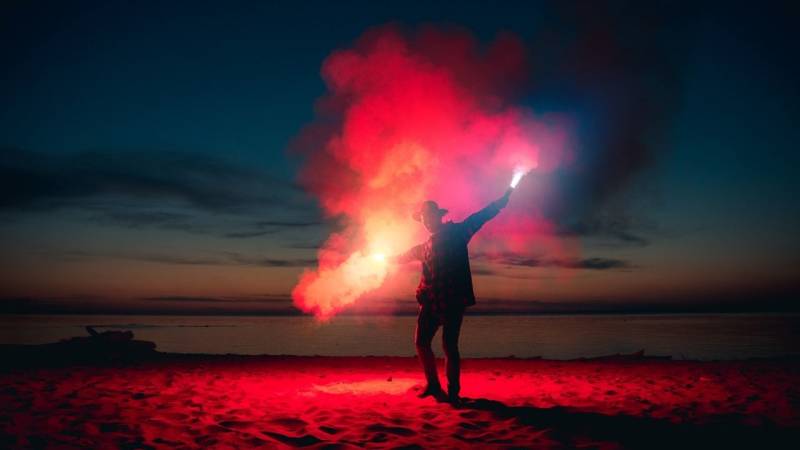
3 primitive signals to get attention in an emergency
👉 The key facts from this guide
- Signals are an excellent way to draw attention to yourself
- Cairn: A stack or tower of stones clearly created by human hands can serve as a guide for search and rescue teams.
- Arrows: Charcoal and charcoal pencils can be used to draw arrows on trees and rocks that lead searchers in the right direction.
- Signal fires: Fire can be used as a very effective signal for help. A smoking fire, especially with black smoke, is very noticeable.
In a survival situation where rescue is expected, it's best to stay put where you are.
Whether you've had an accident or you're lost, continuing to move often makes things worse.
This lethargic approach may seem counterintuitive, but it makes you a fixed target – and therefore easier to find.
For search and rescue teams, locating someone in the wilderness can be a difficult challenge.
In this situation, you can help in your rescue by staying in the area and using these primitive signals to become an active participant in your rescue.
1. Cairns
A cairn is a stack or tower of rocks that has clearly been made by humans.
These simple structures are typically used in rocky, treeless terrain to mark trails and provide reference points.
The same cairn can serve as a way marker for search and rescue teams, especially if you incorporate an arrow to guide them in the right direction.
Cairns can be easy to build if flat rocks are available, but even with chunky rocks, you can construct these navigational pillars.

2. Arrows
You can draw quite nicely with charcoal and charcoal pencils. You can even write complete messages if you have paper.
Even better, however, is drawing arrows on trees and rocks. This lets searchers know what direction you've moved in.

These messages can be simple words like "help" or "SOS," or you can leave more detailed messages.
Or you can draw arrows pointing to your camp. These are best placed in a circle around your survival camp.
These arrows are perfect for directing search and rescue teams right to your doorstep.
The trick is also useful for navigation in poor lighting conditions and bad weather.
And even better, such tracks are durable, do not harm trees, and leave no permanent scars on the landscape.
It's clear that you need a fire. In my guide "Making Fire without Lighter or Matches" you'll learn about all the options available to you.
3. Signal Fire
Fire is your best friend in the wild. And fire can be used as a very effective signal for help, with many documented successes over the last centuries.
However, bear in mind that with large fires, there is a fine line between control and danger.

Remember these important things about signal fires:
- The fire should be in a highly visible location so that both the smoke and light are visible.
- You can create smoke with damp or wet burning material, such as fresh branches with leaves or fresh grass.
- The fire should be in a location where it cannot spread. Lighting a large fire in the middle of dry grassland is a terrible idea.
- Do not let the fire grow so big that you cannot extinguish it.
- Think about contrasts in the landscape. If you don't have a ton of birchbark, everything else you burn in the wild will likely produce only white smoke. If it's a cloudy or foggy day, no one will notice your white smoke. Therefore, use motor oil, brake fluid, cooking oil, or another oily substance for the fire to produce black smoke, which is much more noticeable.

And one last thought on the signal fire: extinguish it when it has served its purpose. Before the helicopter picks you up or the search party escorts you back, extinguish the fire with water and make sure it is out.
What other signals can you think of that can be built without modern tools?


Author of the guide
Martin Gebhardt
Hey, I'm Martin. On my blog, you will learn the basics and numerous details about living in the wild. I think survival, bushcraft and the good life in nature are the keys to happiness. Find me here on Instagram or on YouTube. You can find more about my mission on the About Me page.
Was this guide helpful?
22 people found this guide helpful.
5.00 out of 5 points (22 Ratings)
Comments (0)
This post may contain affiliate links. So if you click on the links and make a purchase, I will receive a small commission at no additional cost to you. Click here, to learn more about it.


